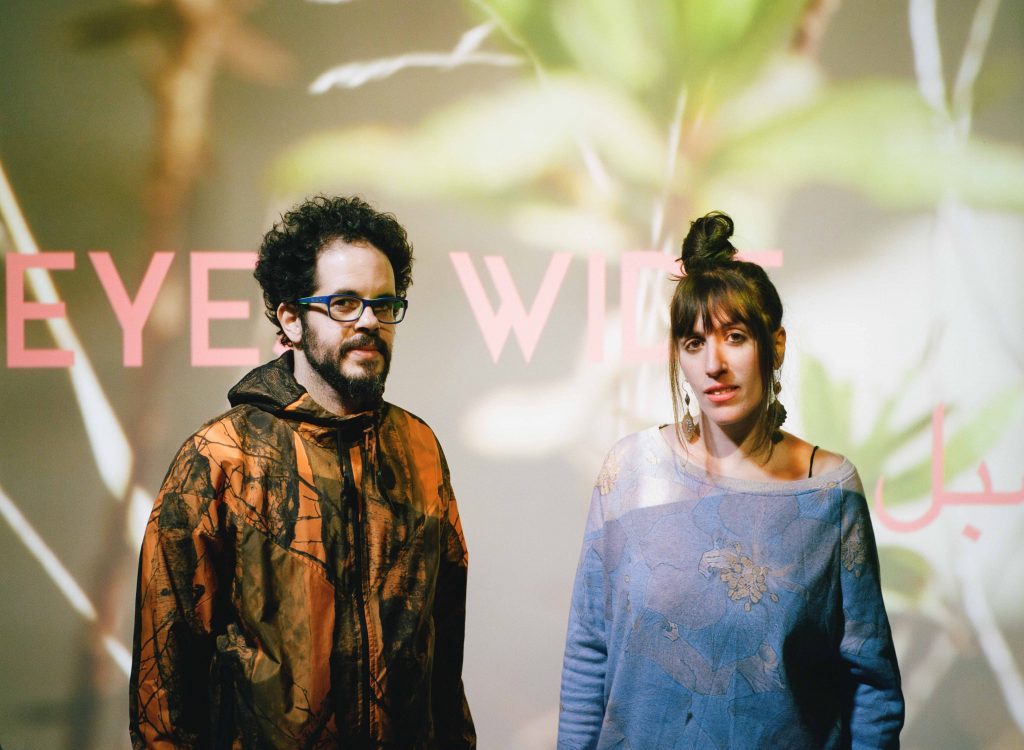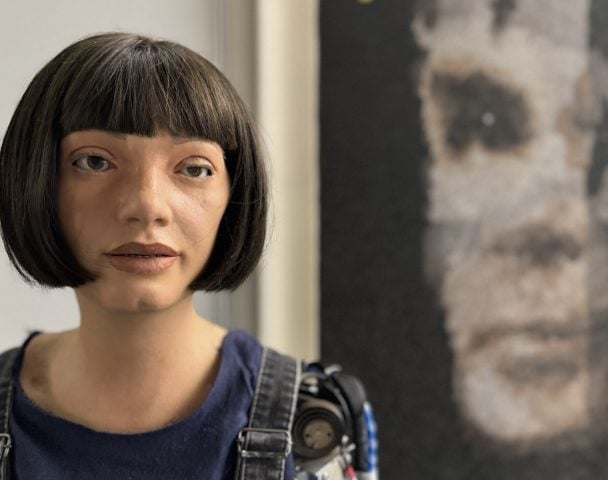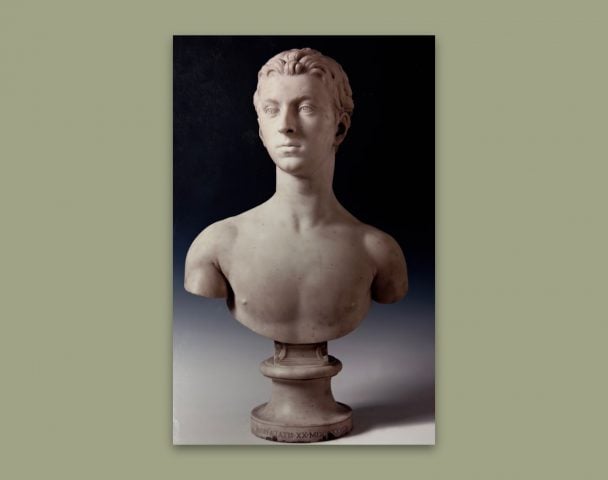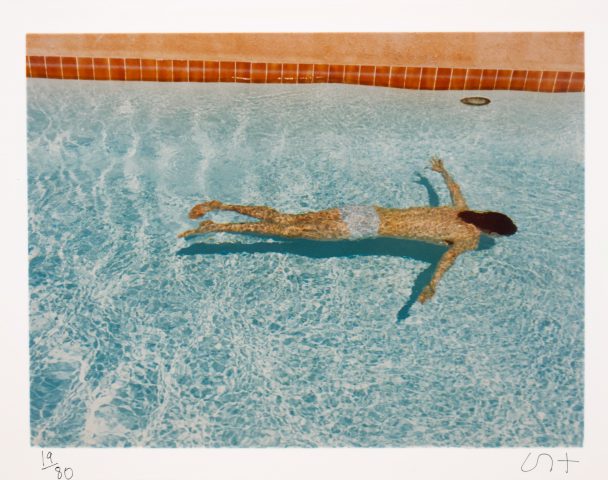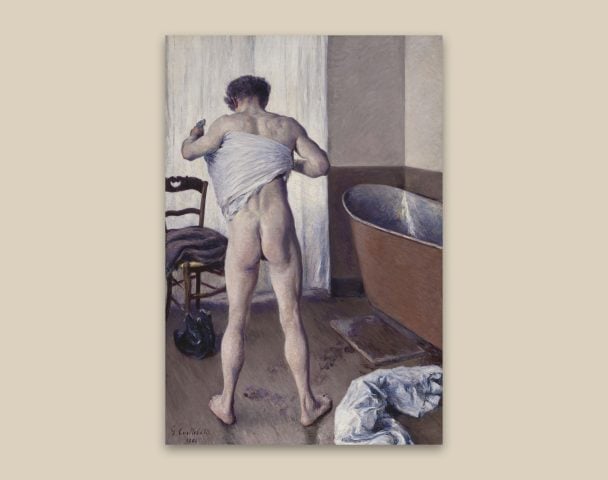It’s not customary that an artistic project begins with a postscript, but when the COVID-19 pandemic hit, it turned the world upside down.
Basel Abbas and Ruanne Abou-Rahme’s newest work, an ongoing multimedia project co-commissioned by the Dia Art Foundation and the Museum of Modern Art, was not exempt from this topsy-turviness. In fact, it was especially susceptible to it.
“We began writing in February about the constant mourning, loss, and grief in Palestine, Syria, Iraq, and that general area, even though our work always tries to resonate in a broader way,” Abou-Rahme said in a phone interview. “When the pandemic happened and there was this immense global scale of loss and mourning, obviously the text started to take on a completely different significance.”
The first part of May amnesia never kiss us on the mouth (2020–), the “postscript,” is now live on Dia’s website, the latest in the institution’s series of online commissions, which began 25 years ago. The project will gradually expand with more chapters in the coming months, and, at an undetermined future time (pandemic developments permitting), be capped off with an exhibition and performance at MoMA, hopefully featuring Palestinian electronic musicians and other performers.
At the time of the Arab Spring a decade ago, the Palestinian artists became captivated with the way everyday people documented and published online their own experiences of the historic events in the Middle East. For them, all this activity redefined what archives are and can be.
They began to download and transcribe videos of public performances, dances, readings, and protests, though they didn’t know how they might eventually use them; many have since disappeared from the internet and exist only in the artists’ archive.
The project took shape slowly and went through a few iterations, and evolved into its present form over the past three years. Its title comes from Roberto Bolaño’s “Infrarealist Manifesto,” an indictment of complacency that the renowned Chilean writer wrote in 1976.
Living in Brooklyn, the artists found themselves at the epicenter of the COVID-19 pandemic in the United States. “Having the privilege of having left Palestine and not living under those conditions,” Abou-Rahme said, “it was intense to feel that the world had become like Palestine and there was no escape.”
With the entire globe becoming steeped in loss, the meaning of their project—especially amid a glut of “the art world goes online” content—could only change. Although it was initially slated to be released in the spring, Dia and the artists agreed to put on the brakes as the artwork’s meaning was retrospectively altered.
“So,” said Abou-Rahme, “we needed to start with the postscript.”
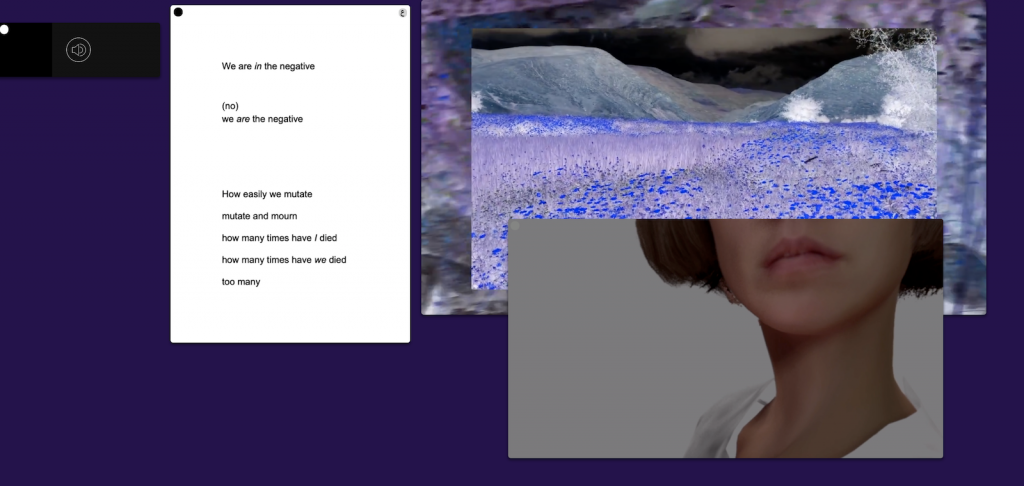
Basel Abbas and Ruanne Abou-Rahme, Postscript: after everything is extracted (detail from May amnesia never kiss us on the mouth), 2020– . Collection of the artists, commissioned by Dia Art Foundation for the Artist Web Projects series. © Basel Abbas and Ruanne Abou-Rahme.
Postscript: After everything is extracted combines the duo’s sometimes rumbling, sometimes meditative downbeat electronic music (they perform as Tashweesh) with sections of found texts. These pop up on small tiles, which the viewer can click on to enlarge, toggle between English and Arabic, and dismiss. They appear alongside images of two phone screens with a man’s and a woman’s avatars on them. It’s a little bit like FaceTiming with these two people while messaging one another poems about loss.
“Every day we mourn another death,” says one text. “We mourn the disappearing land, the severed horizon. We mourn the deterioration of our bodies.”
“We are in the negative / (no) / we are the negative / How easily we mutate / mutate and mourn / how many times have I died / how many times have we died / too many,” reads another.
Under the heading “New York,” one text reads: “This country is on fire. Some things need to burn.” Another, headed “Palestine,” refers to the violence of occupation: “I know the land is scorched.”
In keeping with the long period over which the project has unfurled, the next phase of the online component will expand in summer 2021.
Both born in 1983 (Abbas in Cyprus and Abou-Rahme in Boston), the artists have built up an impressive résumé. Over the last decade, they’ve been included in high-profile shows like the São Paulo Biennale and the Istanbul Biennial, as well as in the Palestinian pavilion at the 2009 Venice Biennale. They’ve mounted solo shows at the Institute of Contemporary Art in Philadelphia and the Kunstverein Hamburg, and their work has entered well-known collections including that of Berlin’s Julia Stoschek.
“I’ve always been attracted to artists with a research-driven practice who aren’t afraid to approach media and performance in a way that can be a sharing of knowledge,” Dia curator Kelly Kivland told Artnet News. She describes the duo’s practice as a kind of “choreographic thinking” that brings various voices together. “It’s the political themes of pushing against defined borders and cultures that I find incredibly prescient.”
Through this Friday, December 18, two video works, Only the beloved keeps our secrets (2016) and And yet my mask is powerful Part 1 (2016–18), are available on Dia’s website.
